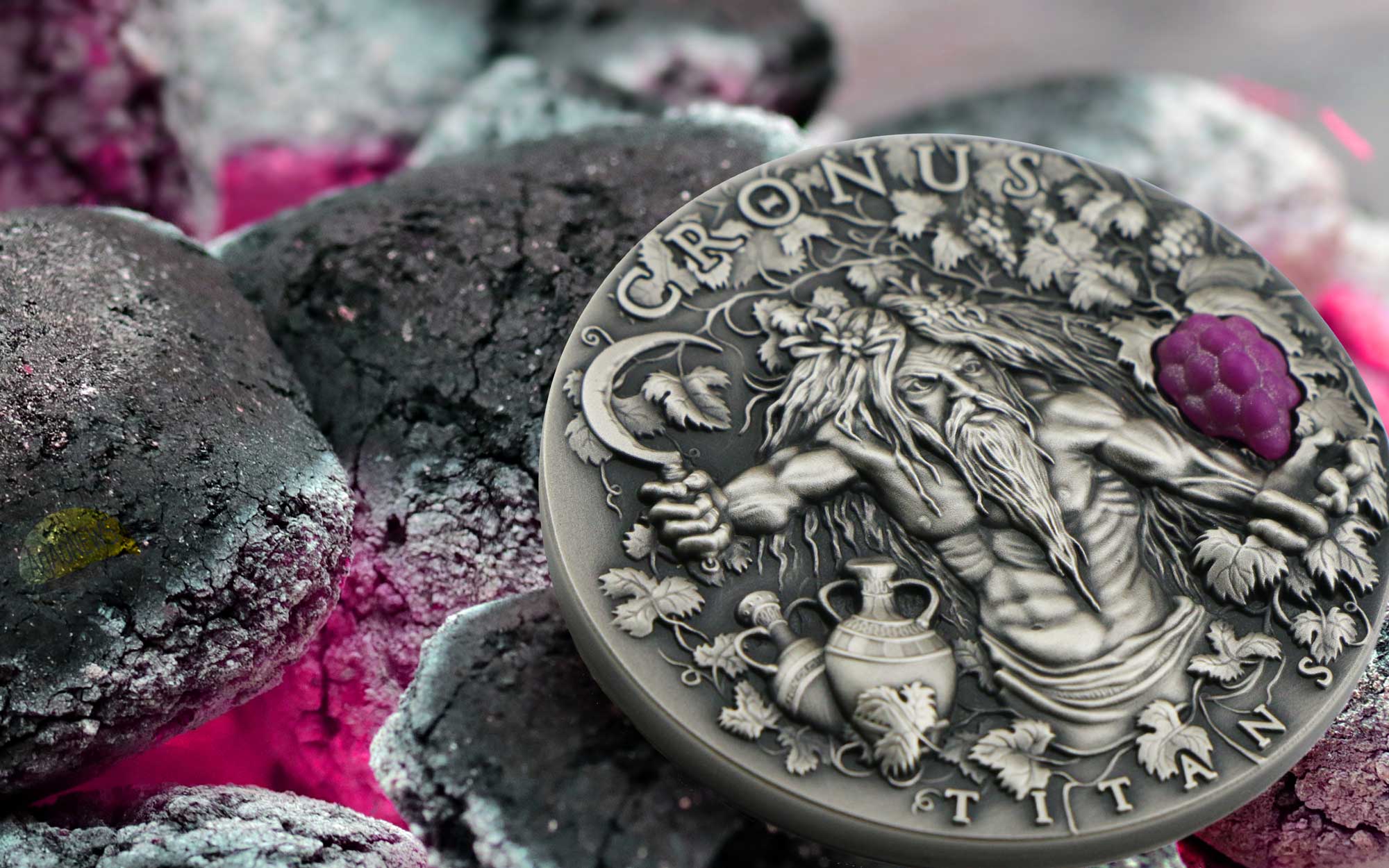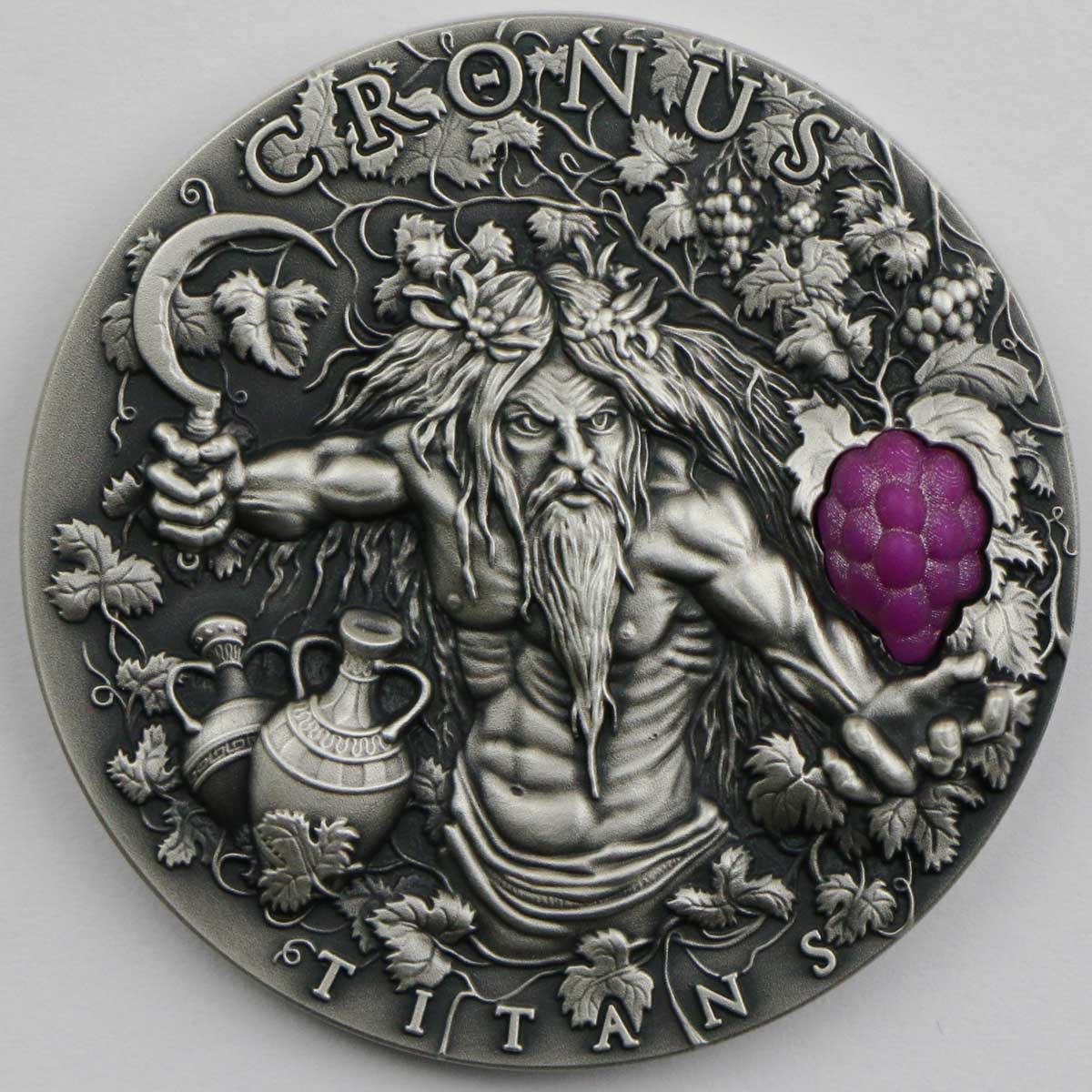Mint of Poland’s superb Cronus coin lives up to the promise of early renders in new real world images
We covered this one in late September, but as with most of the high-end numismatics from the Mint of Poland, the images came in the form of renders. Normally we’d be very cautious of recommending a coin on that basis alone, but this mint has proven particularly adept at turning those renders into some fantastic actual coins and the issuer, Numiartis, have exceptional taste in what they pout their name to (Ares, for example).
As we said in our early look, this is a two-ounce, rimless, high-relief, antique-finished silver coin. Those are pretty much the most common specs for quality ancient mythology themed issues, so again, it will be the design that marks this one out. No problems on that score, fortunately. Cronus is depicted in a pose that makes a nice change from the usual blood and guts generally pictured on coins of this ilk, and it’s all the better for it.
A mintage of just 500 pieces means this may well join the others in being a quick sell-out, especially as it’s the first in the Greek Titans series. A great debut and a series to watch in future. Available to order now from several dealers, including Intercoins Berlin.
THE TITANS
In Greek mythology, the Titans and Titanesses were members of the second generation of divine beings, descending from the primordial deities and preceding the Olympians. Based on Mount Othrys, the Titans most famously included the first twelve children of Gaia (Mother Earth) and Uranus (Father Sky). They ruled during the legendary Golden Age, and also comprised the first pantheon of Greek deities.
The first twelve Titans were the females Mnemosyne, Tethys, Theia, Phoebe, Rhea, and Themis and the males Oceanus, Hyperion, Coeus, Cronus, Crius, and Iapetus. They begat more Titans: Hyperion’s children Helios, Selene, and Eos; Coeus’ children Leto and Asteria; Iapetus’ sons Atlas, Prometheus, Epimetheus, and Menoetius; Oceanus’ daughter Metis; and Crius’ sons Astraeus, Pallas, and Perses. Just as Cronus overthrew his father Uranus, the Titans were overthrown by Cronus’s children (Zeus, Hades, Poseidon, Hestia, Hera and Demeter), in the Titanomachy (or “War of the Titans”).
Cronus was usually depicted with a harpe, scythe or a sickle, which was the instrument he used to castrate and depose Uranus, his father. In Athens, on the twelfth day of the Attic month of Hekatombaion, a festival called Kronia was held in honour of Cronus to celebrate the harvest, suggesting that, as a result of his association with the virtuous Golden Age, Cronus continued to preside as a patron of the harvest. Cronus was also identified in classical antiquity with the Roman deity Saturn.
| SPECIFICATION | |
| DENOMINATION | $2 New Zealand (Niue) |
| COMPOSITION | 0.999 silver |
| WEIGHT | 62.2 grams |
| DIMENSIONS | 45.0 mm |
| FINISH | Antique |
| MODIFICATIONS | High-relief, rimless, 3d printed insert |
| MINTAGE | 500 |
| BOX / COA | Yes / Yes |






Leave A Comment